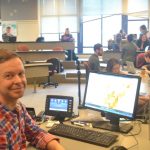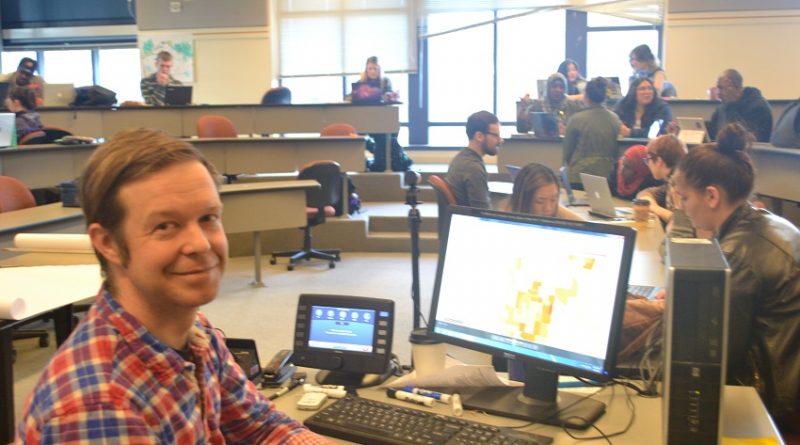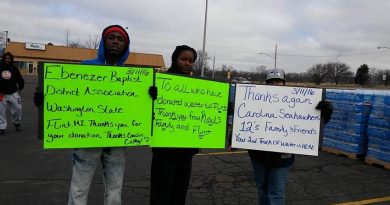UW Tacoma Research Teams Hit the Streets for Poverty
In February, students from Dr. Alex Morrow’s Labor Studies class participated in what was called by Dr. Morrow, “A project that no one at UW had done, one that is unique to UWT.” In an interview with Dr. Morrow, he explained what were some of his motivations for wanting his research team to collect data centered on a Poverty Report Card.
Dr. Morrow described his inspiration as twofold; one having to do with discussions around the minimum wage campaign last fall. There were a lot of assertions made about the minimum wage being raised to $15 an hour.
Because of a lack of data, even those who were the most informed about minimum wage hikes and poverty issues had little data to go on. They had the big macro data that showed 18% of Tacoma’s residents live in poverty, but often times that data was fairly old and outdated and not very detailed. Yet, who are those people? What do we know about them? What’s the correlation between race, education, immigration status, age group, and their location in the city? Dr. Morrow went on to explain how we know that Tacoma and Pierce County have a poverty problem and that there aren’t many details about it. His next motivation for the report was about his commitment to teaching at UWT.
Dr. Morrow is designing projects that are more experiential in nature for students. He allows for hands on community involvement that develop skills on world issues that matter in meaningful ways, not just about regurgitating information in the classroom. The topic for Dr. Morrow came based on his own background as a historian. A lot of his research and writing is around social and demography in the 1920s and ‘30s. This is a little out of his range as a historian, yet, this is a subject that needs to be discussed in modern times. Dr. Morrow explains that part of the inspiration came from some of his colleagues from the Brookings Institute who did a study on the rising rates of poverty in suburbs. Typically American poverty research is focused on poverty in cities. Poverty in suburban areas is on a massive upsurge. According to Dr. Morrow, the Brookings Institute study included areas such as Seattle, Tacoma, and Bellevue, where they found significant statistics of rising poverty rates.
However, none of the research was specific to Tacoma and Pierce County, Tacoma was lumped in with Seattle and Bellevue, which is a little problematic.
The goal of the Poverty Report is to take all the data, whether it is qualitative or quantitative, interviews, statistical tables, or maps to try and distill them down to a Tacoma Race and Poverty Report Card. This card would then be circulated throughout the community via the City Council and newspapers.
The study will be published through the UW Tacoma Center for the Study of Community and Society. Part of the goal is to replicate the research each year, focusing on data collected and publishing the data yearly. Dr. Morrow is the 2016 Acting Director for the UW Tacoma Center for the Study of Community and Society. The Center for Study of Community and Society received funding from the Chancellor’s Office to pursue research related to Black Lives Matter and Black Workers Matter. These are the working topics for 2016, the focus being on race and social justice in Tacoma.
Dr. Morrow along with the research teams were surprised to see that Tacoma is doing fairly well compared to other cities and parts of the country. According to Dr. Morrow, the racial disparities between the Latino and Caucasian communities were stunning to see in graphs. He says, “The disparities were far greater than I had anticipated them to be.”
Research teams consisted of those collecting data from maps, tables, and census data as well as teams that would interview organizations and the homeless. Some of the questions that were addressed in the report card on poverty were: What is the poverty rate in Tacoma? What programs are in place to combat poverty? What do we know about poor households? Are there any notable trends? Research teams examined correlations such as education, country of birth, gender, and age. Some of the questions asked came directly from the research teams.
UWT students who conducted the studies were asked during an in classroom interview what they learned about the Tacoma Poverty Report Card. Jess Pavison’s comments were that, “Although the population of each city is different, the percentages of poverty and those with less than high school degrees (over the age of 25) are very similar. Instead of race being the main issue, we found education to have a bigger impact to poverty.” His research team members, Mina An, Maryssa Tippet, all agreed.
Matt Lelli, another research member that contributed to the poverty status of different races of Latinos, Asians, African Americans, and Caucasians, went on to mention that, “it is astonishing, the disparity between poverty rates for Caucasians and the rates of every other race. It worries me that over the last four decades the racial poverty gap hasn’t closed in any meaningful amounts.” Nicholas La-Nguyen’s comments were, “While the difference in poverty levels exist among all ethnicities, it is a shame that the difference between each race is so large that it is physically noticeable. If possible to reduce this distance between all races, then perhaps the economy wouldn’t have been at such a low level.” Let’s hope this report will be conducted each year with more information on demographics and trends in Tacoma.





